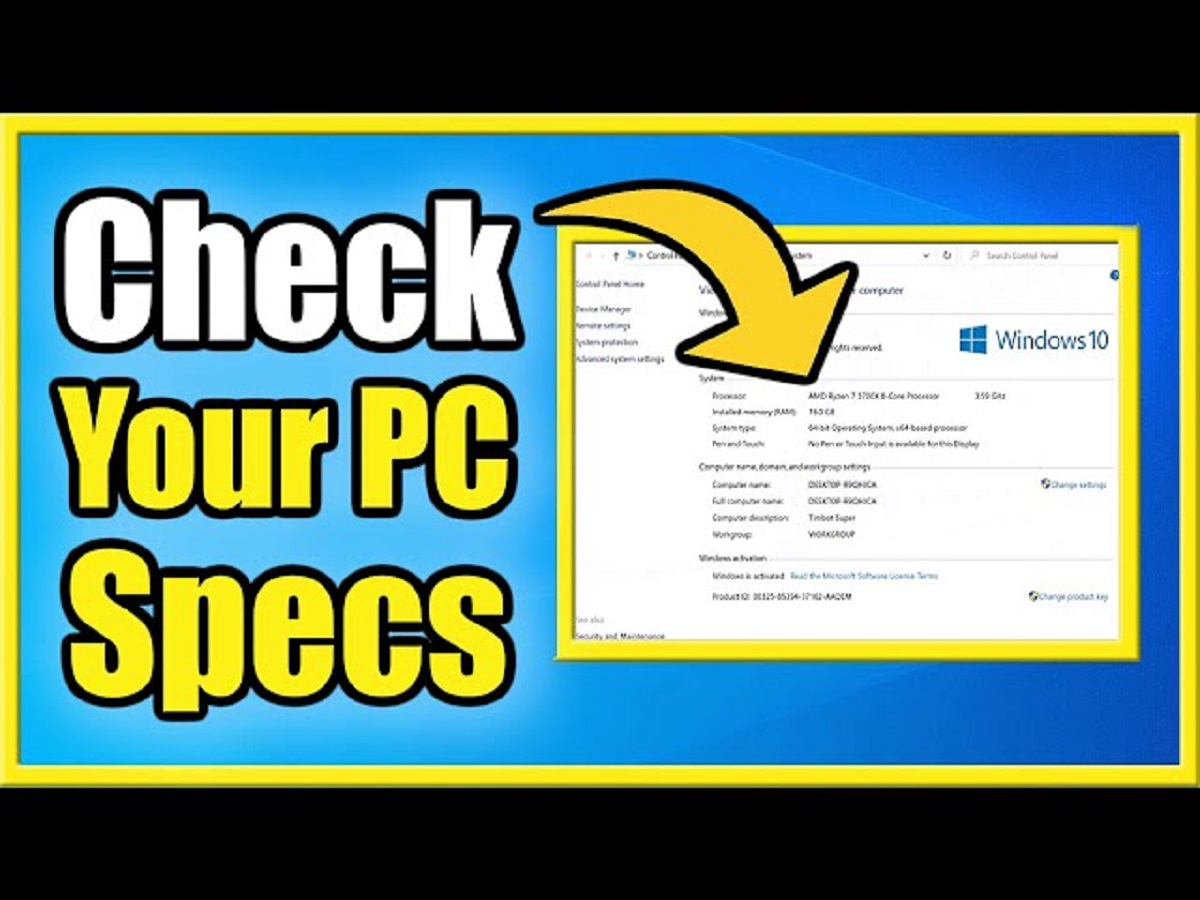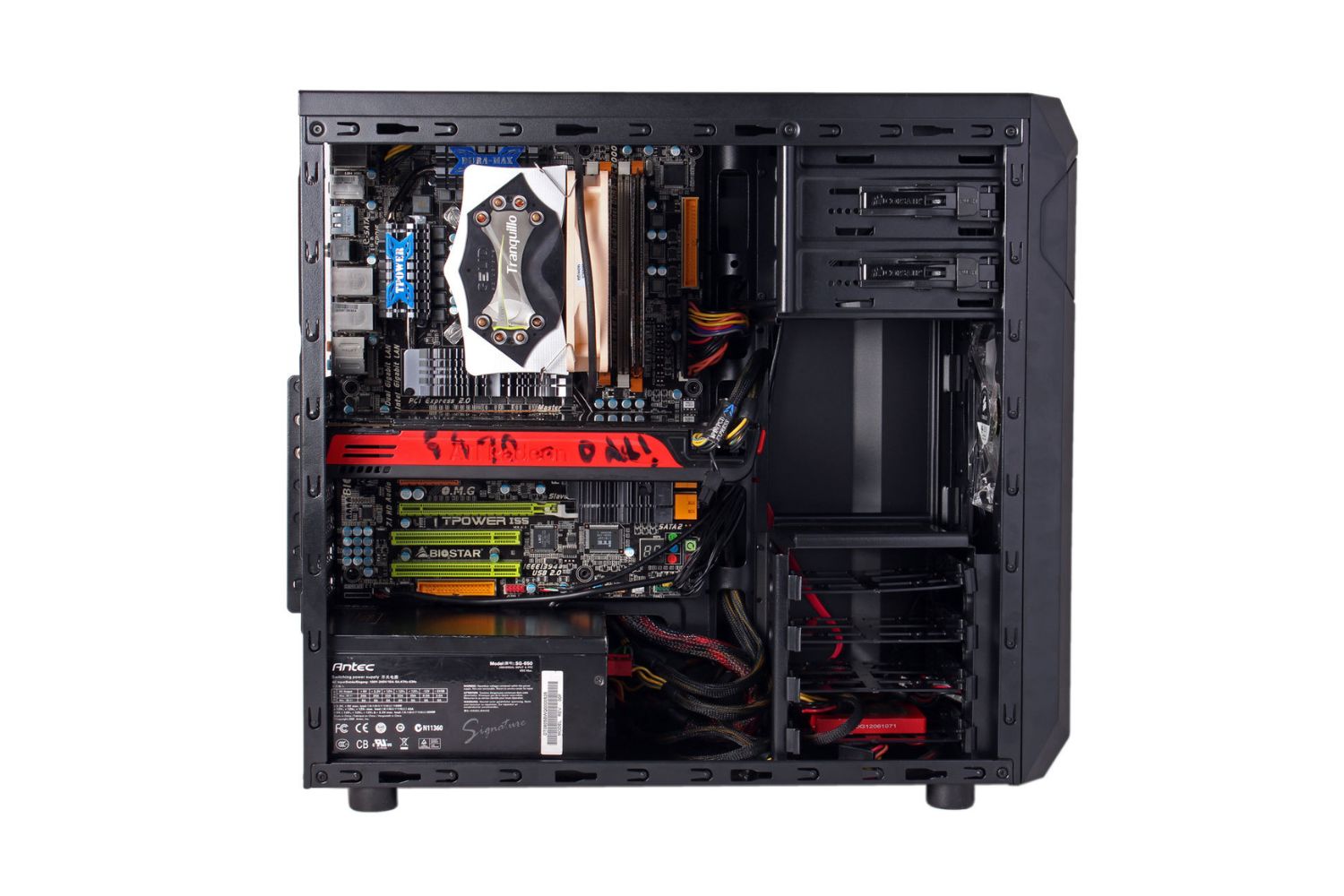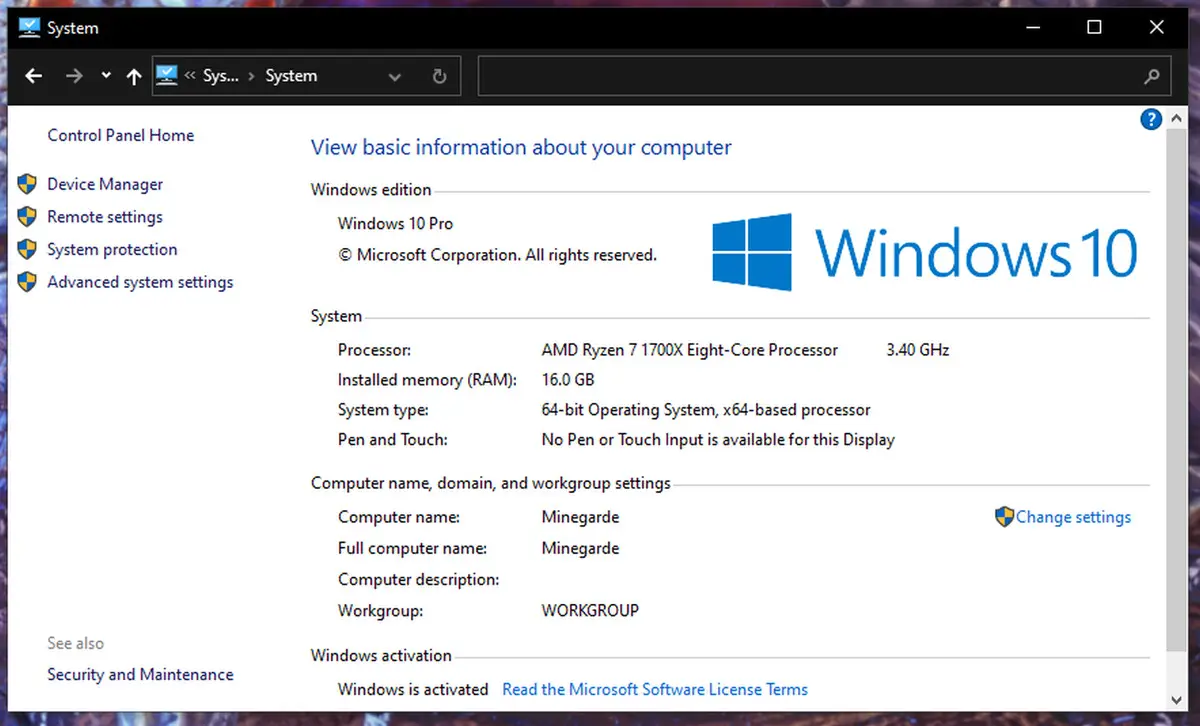Introduction
Have you ever wondered about the specifications of your computer’s CPU? Whether you’re a tech enthusiast, a gamer, or someone who’s simply curious, knowing the details of your CPU can be useful for various reasons. Understanding the power and capabilities of your processor can help you make informed decisions when it comes to system upgrades, software compatibility, and performance optimization.
In this article, we will explore different methods to check your CPU specs, ranging from built-in tools on your Windows operating system to third-party software options. These methods are simple and accessible, allowing even beginners to gather the necessary information about their CPU without any technical expertise.
By knowing your CPU’s specifications, such as the model, number of cores, clock speed, cache size, and architecture, you can gain insights into its performance capabilities. This knowledge can help you assess the suitability of your system for demanding tasks like gaming, video editing, or running resource-intensive software.
Additionally, knowing your CPU specifications can be useful when seeking technical support or troubleshooting issues. Support forums and experts often require this information to provide accurate assistance and troubleshoot any CPU-related problems.
Now, let’s explore the different methods you can use to check your CPU specs on a Windows operating system.
Method 1: Windows Task Manager
One of the easiest ways to check your CPU specifications on a Windows operating system is by using the built-in Task Manager. Task Manager provides real-time information about the various processes and performance metrics of your system, including your CPU.
To access Task Manager, you can right-click on the taskbar at the bottom of your screen and select “Task Manager” from the menu that appears. Alternatively, you can press the Ctrl + Shift + Esc keys simultaneously to open Task Manager directly.
Once Task Manager is open, click on the “Performance” tab at the top. Here, you can see an overview of your system’s performance metrics, including CPU usage and other resource usage graphs.
To delve deeper into your CPU specifications, click on the “CPU” section on the left-hand side of the Performance tab.
In the CPU section, you can see the following information about your CPU:
- Name: The model or name of your CPU.
- Architecture: The architecture type, such as x64 or ARM.
- Cores: The number of physical and logical cores your CPU has.
- Threads: The number of threads your CPU can handle simultaneously.
- Base Speed: The base clock speed of your CPU.
- Current Speed: The current clock speed of your CPU, which may vary based on the workload.
- Usage: The percentage of CPU utilization at the given moment.
By using Task Manager, you can quickly gather essential information about your CPU without the need for any additional software or technical expertise. Keep in mind that while Task Manager provides real-time data, it may not provide a comprehensive overview of all the specific details about your CPU. For a more comprehensive view, you can explore additional methods.
Method 2: System Information Tool
Another built-in tool in Windows that can provide detailed information about your CPU is the System Information tool. This tool offers a comprehensive overview of your computer’s hardware and software specifications, including your CPU.
To open the System Information tool, you can follow these steps:
- Press the Windows key + R on your keyboard to open the Run dialog box.
- Type “msinfo32” (without the quotes) in the Run dialog box and press Enter.
- The System Information window will appear, providing a wealth of information about your system.
In the System Information window, navigate to the “Processor” section on the left-hand side. Here, you will find detailed information about your CPU, including the processor name, manufacturer, architecture, number of cores, and processor ID.
Additionally, the System Information tool can provide other useful information related to your system, such as the installed memory (RAM), operating system version, and more.
By using the System Information tool, you can access a comprehensive summary of your CPU and other system specifications, giving you a more detailed understanding of your system’s capabilities.
It’s important to note that the System Information tool is available on Windows operating systems, and the specific layout and information may vary slightly depending on the version of Windows you are using. However, the general process to access the System Information tool remains the same.
If you need to share this information with someone for troubleshooting purposes or technical support, you can export the system information to a text file by clicking on “File” and selecting “Export.” This will allow you to easily share the details with others without the need to manually type them out.
Method 3: Command Prompt
The Command Prompt is a powerful tool in Windows that allows you to perform various tasks and access detailed information about your system, including your CPU specifications. By utilizing a few simple commands, you can retrieve valuable information about your processor.
To access the Command Prompt, follow these steps:
- Press the Windows key + R on your keyboard to open the Run dialog box.
- Type “cmd” (without the quotes) in the Run dialog box and press Enter.
- The Command Prompt window will open, providing a command-line interface.
In the Command Prompt window, you can use the following commands to retrieve CPU information:
wmic cpu get name: This command displays the name of your processor.wmic cpu get numberofcores: This command shows the number of cores in your CPU.wmic cpu get numberoflogicalprocessors: This command provides the number of logical processors in your CPU.wmic cpu get maxclockspeed: This command reveals the maximum clock speed of your CPU.wmic cpu get l2cachesize: This command displays the size of the L2 cache in your CPU.
To execute any of these commands, simply type the command in the Command Prompt window and press Enter. The corresponding information will be displayed on the screen.
Using the Command Prompt provides a quick and direct way to access essential CPU specifications. However, it might not provide an elaborate summary of your CPU, unlike some other methods. For a more comprehensive view, you can explore additional methods or utilize third-party software.
It’s important to note that the Command Prompt commands may vary slightly depending on your Windows version or system configuration. Make sure to use the correct syntax and double-check any specific commands related to your CPU.
Method 4: PowerShell
PowerShell is another powerful tool available in Windows that provides extensive capabilities for managing and querying your system. With PowerShell, you can easily retrieve detailed information about your CPU specifications by executing a few simple commands.
To access PowerShell, follow these steps:
- Press the Windows key + X on your keyboard to open the Power User menu.
- Select “Windows PowerShell” from the menu. If you don’t see this option, select “Windows PowerShell (Admin)”.
- The PowerShell window will open, providing a command-line interface.
In the PowerShell window, you can use the following commands to gather CPU information:
Get-WmiObject Win32_Processor | Select-Object Name: This command displays the name of your processor.Get-WmiObject Win32_Processor | Select-Object NumberOfCores: This command shows the number of cores in your CPU.Get-WmiObject Win32_Processor | Select-Object NumberOfLogicalProcessors: This command provides the number of logical processors in your CPU.Get-WmiObject Win32_Processor | Select-Object MaxClockSpeed: This command reveals the maximum clock speed of your CPU.Get-WmiObject Win32_Processor | Select-Object L2CacheSize: This command displays the size of the L2 cache in your CPU.
To execute any of these commands, simply type the command in the PowerShell window and press Enter. The corresponding CPU information will be displayed on the screen.
PowerShell provides a convenient and efficient way to access crucial CPU specifications. It offers powerful scripting capabilities and the ability to pipe commands, allowing you to perform complex operations and retrieve specific details about your processor.
Keep in mind that while PowerShell is available on Windows systems, the commands and syntax may vary slightly depending on the version you are using. Make sure to refer to the appropriate documentation or resources for accurate command usage.
Method 5: Third-Party Software
If you prefer a more user-friendly and comprehensive approach to checking your CPU specs, you can utilize third-party software specifically designed for system analysis and monitoring. These software applications provide detailed information about various hardware components, including your CPU.
Some popular third-party software options for checking CPU specifications include:
- CPU-Z: CPU-Z is a lightweight and widely used tool that provides detailed information about your CPU, including the brand, model, architecture, core count, clock speed, cache size, and more. It also provides real-time monitoring of CPU usage and other performance metrics.
- HWiNFO: HWiNFO is a comprehensive system information and diagnostic tool that offers in-depth CPU details along with extensive hardware monitoring capabilities. It provides information about various parameters such as CPU model, clock speeds, temperature, voltage, and more.
- AIDA64: AIDA64 is an all-in-one system information and benchmarking tool that provides thorough CPU information, including clock speeds, cache sizes, cores, threads, and architecture. It also offers additional features such as stress testing and performance benchmarking.
When using third-party software, you can typically download and install the desired application from the official website of the software provider. Once installed, you can open the software and navigate to the CPU section, where you will find detailed information about your CPU specifications.
One of the advantages of using third-party software is the comprehensive nature of the information provided. These tools often include additional features and metrics that can aid in system analysis and performance optimization.
It’s important to stay cautious and download software only from reputable sources to ensure the safety and security of your system. Always verify the software’s authenticity and read user reviews to make an informed choice.
Third-party software can be particularly beneficial for advanced users, enthusiasts, or individuals looking for an extensive overview of their CPU specifications and system performance.
Keep in mind that third-party software may have specific system requirements and may not be available for all operating systems. Make sure to check the compatibility and system requirements before downloading or installing any third-party software.
Conclusion
Knowing the specifications of your CPU is essential for understanding the capabilities of your computer and making informed decisions regarding system upgrades, software compatibility, and performance optimization. Fortunately, there are several methods to check your CPU specs on a Windows operating system.
The first method involves using the built-in Windows Task Manager, which provides real-time data on CPU usage and basic specifications. The second method involves utilizing the System Information tool, which offers a comprehensive overview of your CPU and other system components.
Alternatively, you can rely on the Command Prompt or PowerShell to access detailed CPU information through simple commands. These command-line interfaces provide valuable details about your CPU architecture, core count, clock speed, and cache size.
If you prefer a more user-friendly approach, third-party software like CPU-Z, HWiNFO, or AIDA64 can provide a comprehensive overview of your CPU specifications, along with additional system monitoring and performance analysis features.
By utilizing any of these methods, you can gather the necessary information about your CPU without the need for extensive technical expertise. Whether you’re a tech enthusiast, a gamer, or someone who simply wants to understand their system better, checking your CPU specs is a valuable step towards optimizing your computing experience.
Remember to choose the method that suits your needs and preferences. The knowledge gained from understanding your CPU specifications can help you ensure compatibility, troubleshoot issues, and enhance the performance of your system.
So, take a moment to explore these methods and uncover the details of your CPU. Armed with this knowledge, you can make informed decisions and fully utilize the capabilities of your computer.

























